

Wooden LEGO mowingmachine, ca 1940/1945, (Mod.Nr 679).
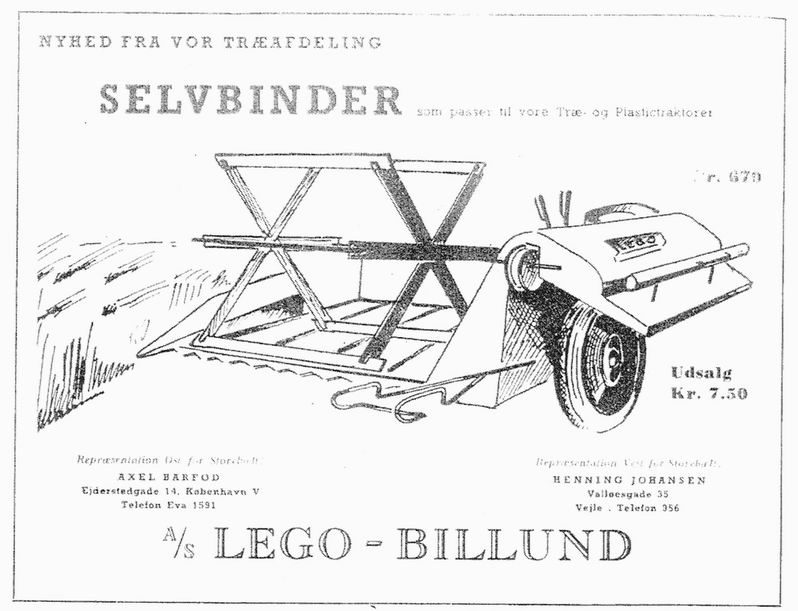
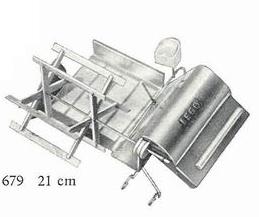
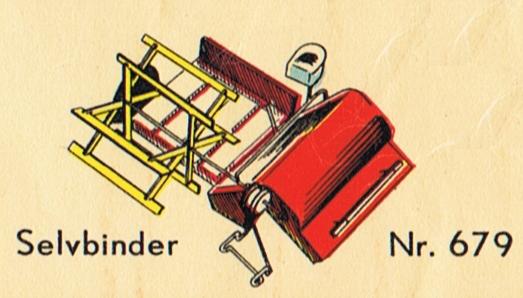
height: 9,0 cm
width: 10,0 cm (without mowincolf and seat)
ength: 20,5 cm (without hooks)
weight: 319 gram
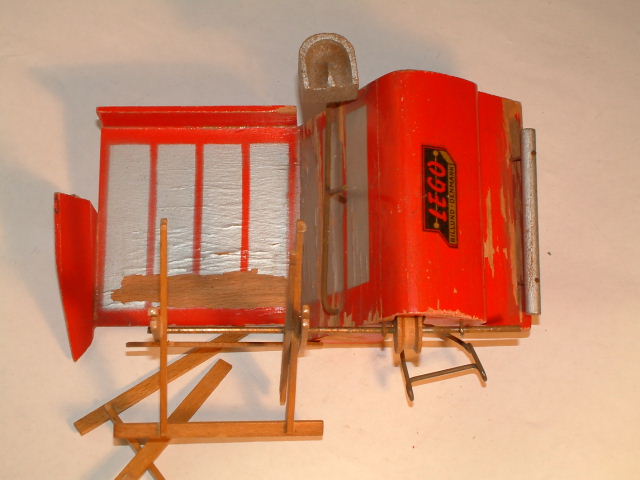
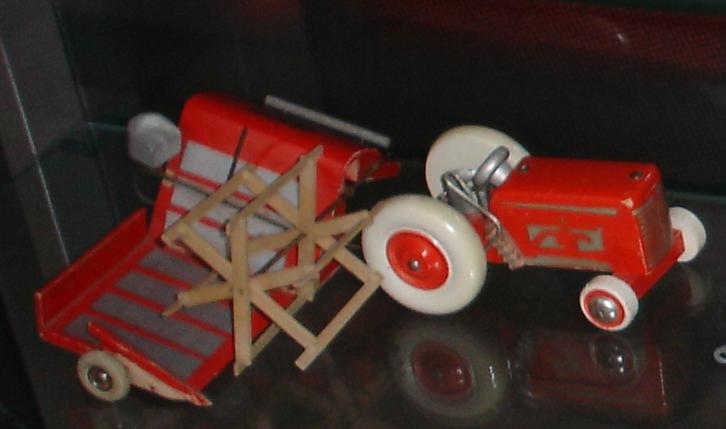
Self-binder
The self-binder is old a farming machine, which improved the Moissonneuse. This machine was invented in 1872 by Charles Withington. As the reaping-machine it mowed the stems of cereals, but moreover it made it possible automatically to bind them in sheaves. Those were then piled up out of grinding stones in order to ensure the drying of ears during several days before the beating which was done at fixed telephone.
The machine invented by Withington used Fil of iron to bind the sheaves. That posed various problems, because the wire was introduced by the cattle, damaged the grinding stones of the mills, and caused accidents with the hands of the farmers, and very quickly William Deering developed a model using string while John Appleby invented a Lieur.
The first self-binders were tractor drawn by
horses and were actuated by a sprocket-wheel (kind of toothed wheel).
Thereafter, the horses were replaced by tractors. They were equipped with a
winch-pickup and a Barre of cut similar to those which one finds in front of
the combine harvesters.
Les mown stems fell into a fabric which convoyait them behind towards the
mechanism binder. This last formed the sheaves and bound them using a string.
Once this one tied, the sheaf was poured on the ground with the back of the
machine.
With the appearance of the Combine harvester which replaced the Batteuse definitively, the self-binder became obsolete. Certain cereals, as the oats are still collected and put in Andain S using a mowing. Generally, in particular for the Corn, the cut and beating are carried out in only one operation thanks to the combine harvester.
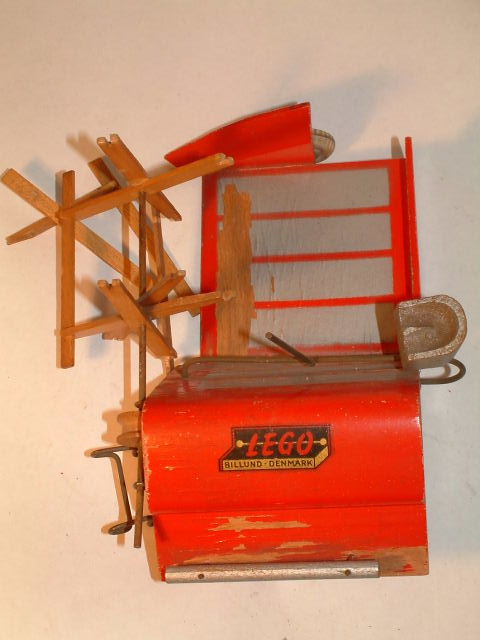
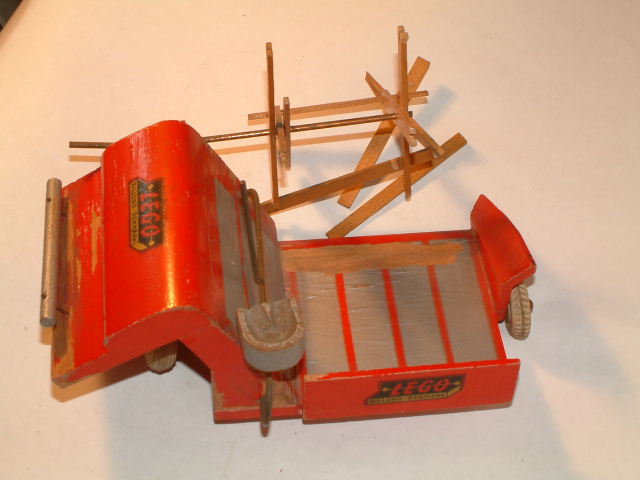
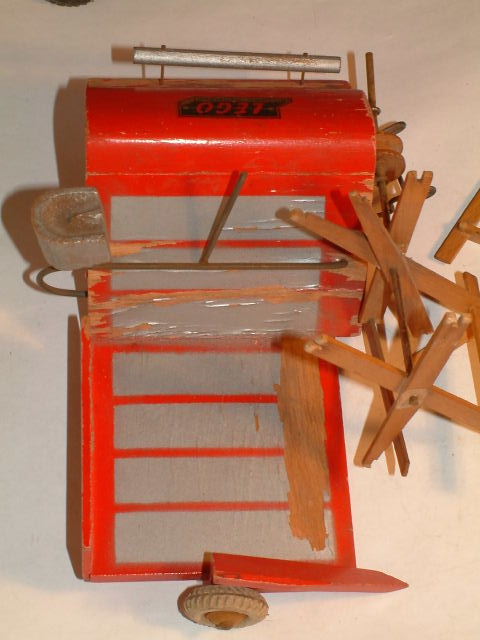
Wooden LEGO Self-binder, ca 1948, (Mod.Nr 1679).
Wooden BILOfix Self-binder, ca 1954.
Click on the pictures to enlarge them!